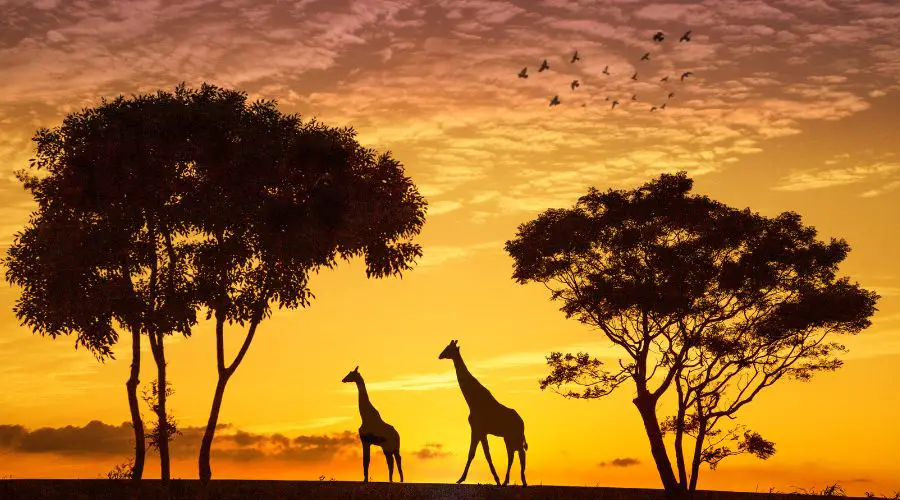Discover the Ultimate Time to Cruise Alaska for Wildlife Adventure!
Alaska is home to a diverse range of wildlife, including whales, bears, otters, sea lions, eagles, and other marine and land animals.

The state’s vast natural beauty makes it a popular destination for cruise enthusiasts who want to experience the best of Alaska’s wildlife.
However, choosing the best time to cruise Alaska to see wildlife can be a challenging task.
The best time to cruise Alaska to see wildlife depends on various factors, such as migration patterns, hibernation, and food sources.
While wildlife can be spotted throughout the year, the months from April to September are considered the best time to see wildlife in Alaska.
During this period, you can spot whales, bears, otters, sea lions, eagles, and other marine and land animals in their natural habitats.
Best Time to Cruise Alaska for Wildlife
If you’re planning a cruise to Alaska to see wildlife, it’s important to choose the right time of year. The peak season for wildlife viewing in Alaska is from April to September, which coincides with the cruise season.
However, the best time to see specific animals can vary depending on the month. Here are the best times to cruise Alaska for wildlife:
June to August
The months of June to August are the best time to see whales on an Alaska cruise. This is when humpback whales, orcas, and gray whales are most active in the waters around Alaska.
You’ll also have a good chance of seeing other marine animals such as sea lions, otters, and porpoises during this time.
If you’re interested in seeing bears, June to August is also a good time to cruise Alaska. This is when bears come out of hibernation and start looking for food. You may see them fishing for salmon in the rivers or even on the shore near your cruise ship.
May and September
If you want to avoid the crowds, May and September are the best times to cruise Alaska for wildlife. These months are considered shoulder season and are less busy than the peak summer months.
You’ll still have a good chance of seeing whales, bears, and other wildlife, but you’ll also have more space to yourself.
In May, you may also have a chance to see bear cubs with their mothers. This is a great time to see the playful cubs and learn about their habits.
September is a good time to see the fall colors in Alaska and spot bald eagles.
April and October
April and October are the least popular months to cruise Alaska, but they can still be good times to see wildlife. In April, you may see gray whales migrating north to Alaska. This is also a good time to see sea lions and otters.
In October, you may see bald eagles and other birds migrating south for the winter.
Keep in mind that weather can be unpredictable in April and October, so be prepared for cooler temperatures and rain.
Overall, the best time to cruise Alaska for wildlife is from April to September, but the specific animals you’ll see can vary depending on the month.
Choose the time that works best for you and get ready for an unforgettable wildlife experience.
Types of Wildlife to See in Alaska
Bears
One of the most iconic animals in Alaska is the bear. There are three types of bears that can be seen in Alaska: black bears, brown bears, and polar bears. Black bears can be found in the forested regions of Alaska, while brown bears are more commonly found near the coast. Polar bears are only found in the northernmost regions of Alaska.
Visitors to Alaska can spot bears in the wild during the summer months when they come out of hibernation to search for food. They can be seen fishing for salmon in rivers and streams or foraging for berries in the forests.
Whales
Another popular animal to see on an Alaskan cruise is the whale. There are several species of whales that can be seen in Alaska, including humpback whales, orcas, and gray whales.
These majestic creatures can often be seen breaching the water’s surface and spouting water from their blowholes.
The best time to see whales in Alaska is during the summer months when they migrate to the area to feed. Visitors can take whale watching tours to get up close and personal with these amazing animals.
Moose
The moose is the largest member of the deer family and can be found throughout Alaska. These animals are known for their impressive antlers and their ability to survive in harsh winter conditions.
Visitors to Alaska can spot moose in the wild during the summer months when they come out of the forests to feed on vegetation near the water’s edge.
Overall, Alaska is home to a wide variety of wildlife that can be seen during a cruise. From bears and whales to moose and eagles, there is no shortage of amazing animals to see and appreciate.
Tips for Wildlife Viewing
Choose the Right Cruise
When it comes to wildlife viewing, not all cruises are created equal. Some cruises offer more opportunities to see wildlife than others. It’s important to do your research and choose a cruise that is known for its wildlife sightings. Look for cruises that visit areas known for their wildlife, such as Glacier Bay National Park or the Inside Passage.
Additionally, consider the size of the ship. Smaller ships can often get closer to wildlife and navigate through smaller channels and bays that larger ships cannot. However, larger ships may have more amenities and activities for passengers.
Bring the Right Gear
When going on a wildlife viewing cruise in Alaska, it’s important to bring the right gear. Binoculars are a must-have for spotting wildlife from the ship. A camera with a zoom lens can also be helpful for capturing photos of wildlife.
As Alaska can be quite cold, it’s important to bring warm clothing, such as a waterproof jacket, gloves, and a hat. Additionally, consider bringing sunscreen and sunglasses for when the sun is shining.
Be Respectful of Wildlife
When viewing wildlife in Alaska, it’s important to be respectful of the animals and their habitats. Keep a safe distance from wildlife and do not disturb or approach them. Feeding wildlife is also strictly prohibited, as it can be harmful to their health and disrupt their natural behavior.
Additionally, be mindful of the environment and dispose of trash properly. Leave the area as you found it, so that future generations can also enjoy the beauty of Alaska’s wildlife.






